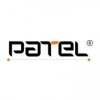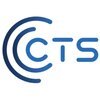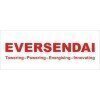


i
Filter interviews by
Speed Engineering Solutions Interview Questions and Answers
17 Interview questions
Slenderness parameters assess the stability of structural members under load, crucial for design in STAAD analysis.
Slenderness ratio (λ) is defined as the effective length divided by the radius of gyration.
For columns, a high slenderness ratio indicates susceptibility to buckling.
Example: A column with an effective length of 3000 mm and radius of gyration of 150 mm has a slenderness ratio of 20.
STAAD allows for th...
Utilizing checklists and time management techniques ensures project efficiency and accountability.
Create a detailed checklist at the start of the project to outline tasks and milestones.
Prioritize tasks using the Eisenhower Matrix to distinguish between urgent and important activities.
Set specific time blocks for focused work sessions, such as the Pomodoro Technique, to enhance productivity.
Regularly review and up...
The factor of wire selection is determined by the current carrying capacity, voltage rating, insulation material, and environmental conditions.
Current carrying capacity: Ensure the wire can handle the maximum current without overheating.
Voltage rating: Select a wire with a voltage rating higher than the system voltage.
Insulation material: Choose the appropriate insulation material based on temperature and environm...
Selection of circuit breaker type depends on various factors such as voltage, current rating, breaking capacity, and application.
Consider the voltage level - low voltage, medium voltage, high voltage
Determine the current rating - thermal and magnetic settings
Evaluate the breaking capacity - short circuit withstand capability
Analyze the application - industrial, commercial, residential
Types of circuit breakers incl...
CT and PT are electrical devices used for measuring current and voltage in power systems.
CT stands for Current Transformer and is used to measure high currents by stepping down the current to a lower value.
PT stands for Potential Transformer and is used to measure high voltages by stepping down the voltage to a lower value.
CTs and PTs are commonly used in power distribution systems to provide accurate measurements...
CT burdens refer to the impedance or resistance that a current transformer (CT) presents to the secondary circuit.
CT burdens are typically expressed in ohms and represent the load that the CT must drive.
The burden impedance can affect the accuracy of the CT's output signal.
Common CT burdens include resistors, relays, meters, and other devices connected to the CT's secondary circuit.
It is important to match the CT ...
CT protection ensures safety in electrical systems by preventing overloads and faults through accurate current measurement.
CT stands for Current Transformer, used to measure alternating current.
Protection classes include: Class 0.5, Class 1, Class 3, etc., indicating accuracy levels.
Class 0.5 CTs are used for revenue metering due to high accuracy.
Class 5 CTs are suitable for protection relays in power systems.
CTs ...
Natural frequency is the frequency at which a system oscillates when disturbed from its equilibrium position.
It is the frequency at which a system vibrates without any external force applied.
It is determined by the stiffness and mass of the system.
It is an important factor in designing structures to avoid resonance.
Examples include the natural frequency of a guitar string or a suspension bridge.
Transmissibility is the ratio of the amplitude of vibration of a system with a force applied to it to the amplitude of the force applied.
It is a measure of how much a system amplifies or attenuates vibrations.
It is expressed as a ratio or a percentage.
Transmissibility depends on the frequency of the force and the natural frequency of the system.
A system with a low natural frequency will have a high transmissibilit...
Types of welds include fillet welds, groove welds, plug welds, and spot welds.
Fillet welds are used to join two surfaces at right angles.
Groove welds are used to join two metal edges together.
Plug welds are used to fill a hole in one of the pieces being joined.
Spot welds are made by overlapping two metal sheets and applying pressure and heat to create a weld.
Speed Engineering Solutions Interview Experiences
15 interviews found
Senior Electrical Design Engineer Interview Questions & Answers
posted on 6 May 2024
I applied via Naukri.com and was interviewed in Apr 2024. There was 1 interview round.
(5 Questions)
- Q1. What is CT BURDENS?
- Ans.
CT burdens refer to the impedance or resistance that a current transformer (CT) presents to the secondary circuit.
CT burdens are typically expressed in ohms and represent the load that the CT must drive.
The burden impedance can affect the accuracy of the CT's output signal.
Common CT burdens include resistors, relays, meters, and other devices connected to the CT's secondary circuit.
It is important to match the CT burde...
- Q2. Tell me about CT and PT.
- Ans.
CT and PT are electrical devices used for measuring current and voltage in power systems.
CT stands for Current Transformer and is used to measure high currents by stepping down the current to a lower value.
PT stands for Potential Transformer and is used to measure high voltages by stepping down the voltage to a lower value.
CTs and PTs are commonly used in power distribution systems to provide accurate measurements for ...
- Q3. What is a factor of wire selection?
- Ans.
The factor of wire selection is determined by the current carrying capacity, voltage rating, insulation material, and environmental conditions.
Current carrying capacity: Ensure the wire can handle the maximum current without overheating.
Voltage rating: Select a wire with a voltage rating higher than the system voltage.
Insulation material: Choose the appropriate insulation material based on temperature and environmental...
- Q4. CT protection and class?
- Ans.
CT protection ensures safety in electrical systems by preventing overloads and faults through accurate current measurement.
CT stands for Current Transformer, used to measure alternating current.
Protection classes include: Class 0.5, Class 1, Class 3, etc., indicating accuracy levels.
Class 0.5 CTs are used for revenue metering due to high accuracy.
Class 5 CTs are suitable for protection relays in power systems.
CTs help ...
- Q5. Type of CB and selection factor?
- Ans.
Selection of circuit breaker type depends on various factors such as voltage, current rating, breaking capacity, and application.
Consider the voltage level - low voltage, medium voltage, high voltage
Determine the current rating - thermal and magnetic settings
Evaluate the breaking capacity - short circuit withstand capability
Analyze the application - industrial, commercial, residential
Types of circuit breakers include M...
Interview Preparation Tips
(2 Questions)
- Q1. Thermal question to be prepared
- Q2. GEOMETRRIC DIMENSIONS AND TOLERANCE
- Ans.
Geometric dimensions and tolerance are crucial in design engineering to ensure accurate and consistent manufacturing.
Geometric dimensions refer to the physical measurements and characteristics of a part or component.
Tolerances specify the allowable variations in dimensions to ensure proper fit and function.
GD&T (Geometric Dimensioning and Tolerancing) is a system used to define and communicate engineering tolerances.
Ex...
(2 Questions)
- Q1. Salary expected
- Ans.
I expect a salary that reflects my skills, experience, and the industry standards for a Design Engineer role.
Research industry standards: For example, Glassdoor or Payscale can provide insights into average salaries for Design Engineers.
Consider my experience level: With 5 years in the field, I would expect a salary in the mid to upper range of the industry average.
Factor in location: Salaries can vary significantly ba...
- Q2. NOTICE PERIOD IN PRESENT COMPANY
Interview Preparation Tips
Skills evaluated in this interview
- Q1. Can you tell me about yourself?
- Q2. What difficulties do you encounter when managing a project?
- Ans.
Managing a project involves various challenges, including scope changes, resource allocation, and stakeholder communication.
Scope Creep: Unexpected changes in project requirements can lead to delays and budget overruns. For example, a client may request additional features mid-project.
Resource Allocation: Balancing team members' workloads and ensuring the right skills are available can be difficult. For instance, if a ...
I appeared for an interview before Apr 2024, where I was asked the following questions.
- Q1. Casting process and design considerations
- Ans.
Casting is a manufacturing process where liquid material is poured into a mold to create desired shapes.
Material Selection: Choose appropriate materials like aluminum, iron, or plastics based on strength and thermal properties.
Mold Design: Ensure molds are designed for easy release and minimal defects; for example, using sand casting for complex shapes.
Cooling Rate: Control cooling rates to minimize defects like warpin...
- Q2. Geometric dimensioning and tolerancing
I applied via Company Website and was interviewed in Jul 2023. There were 3 interview rounds.

(1 Question)
- Q1. HR ask about motive to join speed Engineering. She asked about my previous work experience, educational background. As I satisfy the job requirements, so she informs me about the vacancy which is available...
(1 Question)
- Q1. Interviewer is one manager of the Client company, where I am being deputed. Ask me about Genset Control System. The interviewer domain is related to ECM and Sensor Calibration in Engine Controls. So, he as...
Interview Preparation Tips
I applied via Naukri.com and was interviewed before Jan 2024. There were 3 interview rounds.
Typical internet available aptitude test
(3 Questions)
- Q1. Types of contact
- Ans.
Types of contact refer to different ways in which two objects interact with each other in a CAE simulation.
Bonded contact: objects are connected and move together
No separation contact: objects cannot separate
Frictional contact: objects can slide against each other
Rigid contact: no deformation allowed between objects
- Q2. Types of fea analysis
- Ans.
Types of FEA analysis include linear static, nonlinear static, dynamic, thermal, and modal analysis.
Linear static analysis: evaluates the response of a structure under a static load.
Nonlinear static analysis: considers material nonlinearity, large deformations, and contact.
Dynamic analysis: studies the behavior of a structure under dynamic loads or vibrations.
Thermal analysis: assesses the temperature distribution and ...
- Q3. Types of weld and there fea analysis
- Ans.
Types of welds include fillet welds, groove welds, plug welds, and spot welds.
Fillet welds are used to join two surfaces at right angles.
Groove welds are used to join two metal edges together.
Plug welds are used to fill a hole in one of the pieces being joined.
Spot welds are made by overlapping two metal sheets and applying pressure and heat to create a weld.
(2 Questions)
- Q1. Typical question of roles and responsibility
- Q2. Salary negotiate with speed requirement
Interview Preparation Tips
I applied via Naukri.com and was interviewed before May 2023. There was 1 interview round.
(1 Question)
- Q1. Basic FEA questions, be prepared with that
Interview Preparation Tips
Small scale company so have to extend hours for which no one appreciates the efforts, no workstations or license, because of which it is expected to extend working hours.

(1 Question)
- Q1. Asked about my project topic and relevant technical questions.
Tool test for different softwares for CFD
(1 Question)
- Q1. Define Success, Competition. How long would you serve this organisation ? Would you sign the bond ?
- Ans.
Success is achieving goals while maintaining integrity. Healthy competition drives growth. Will serve as long as I can contribute. Will sign bond.
Success is not just achieving goals, but doing so while maintaining integrity and ethical standards.
Competition is healthy and drives growth, but should not compromise ethical values.
I will serve the organization as long as I can contribute positively and learn from the exper...
I appeared for an interview before Jun 2024, where I was asked the following questions.
- Q1. How you manage team.
- Ans.
I manage my team through clear communication, empowerment, and fostering a collaborative environment.
Establish clear goals: I set SMART goals for the team to ensure everyone knows what is expected.
Encourage open communication: I hold regular check-ins to discuss progress and address any concerns.
Empower team members: I delegate tasks based on individual strengths, allowing team members to take ownership.
Foster collabor...
- Q2. How you effectively use checklist & time to manage project
- Ans.
Utilizing checklists and time management techniques ensures project efficiency and accountability.
Create a detailed checklist at the start of the project to outline tasks and milestones.
Prioritize tasks using the Eisenhower Matrix to distinguish between urgent and important activities.
Set specific time blocks for focused work sessions, such as the Pomodoro Technique, to enhance productivity.
Regularly review and update ...
Interview Preparation Tips
I appeared for an interview before Jun 2024, where I was asked the following questions.
- Q1. What are the slenderness parameters for structural members in STAAD?
- Ans.
Slenderness parameters assess the stability of structural members under load, crucial for design in STAAD analysis.
Slenderness ratio (λ) is defined as the effective length divided by the radius of gyration.
For columns, a high slenderness ratio indicates susceptibility to buckling.
Example: A column with an effective length of 3000 mm and radius of gyration of 150 mm has a slenderness ratio of 20.
STAAD allows for the cal...
- Q2. Which type of projects executed in past company.
- Ans.
Led diverse projects including software development, process optimization, and team training, enhancing efficiency and productivity.
Implemented a new CRM system that improved customer engagement by 30%.
Managed a cross-functional team to streamline operations, reducing costs by 15%.
Conducted training programs that increased team performance metrics by 25%.
Oversaw a product launch that achieved 20% market share within th...
Top trending discussions






Speed Engineering Solutions Interview FAQs
The duration of Speed Engineering Solutions interview process can vary, but typically it takes about less than 2 weeks to complete.
Tell us how to improve this page.
Speed Engineering Solutions Interviews By Designations
- Speed Engineering Solutions Associate Project Engineer Interview Questions
- Speed Engineering Solutions Project Engineer Interview Questions
- Speed Engineering Solutions Product Engineer Interview Questions
- Speed Engineering Solutions Senior Team Manager Interview Questions
- Speed Engineering Solutions CAE Engineer Interview Questions
- Speed Engineering Solutions Design Engineer Interview Questions
- Speed Engineering Solutions Senior Project Engineer Interview Questions
- Speed Engineering Solutions Senior Electrical Design Engineer Interview Questions
- Show more
Interview Questions for Popular Designations
Overall Interview Experience Rating
based on 16 interview experiences
Difficulty level
Duration
Interview Questions from Similar Companies
Speed Engineering Solutions Reviews and Ratings
based on 113 reviews
Rating in categories
|
Project Engineer
67
salaries
| ₹2.8 L/yr - ₹7.5 L/yr |
|
Design Engineer
51
salaries
| ₹2.7 L/yr - ₹6.8 L/yr |
|
Associate Project Engineer
46
salaries
| ₹2 L/yr - ₹5 L/yr |
|
Associate Design Engineer
22
salaries
| ₹1.5 L/yr - ₹5 L/yr |
|
Project Design Engineer
21
salaries
| ₹2.6 L/yr - ₹5 L/yr |

Patel Infrastructure

CTS Consulting & Technical Support

J K Fenner

Saudi Binladin Group
- Home >
- Interviews >
- Speed Engineering Solutions Interview Questions










